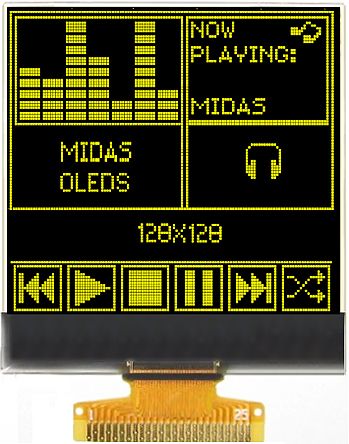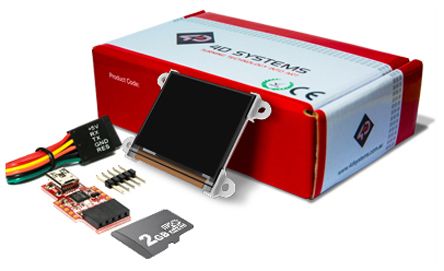
|
What is an OLED display?
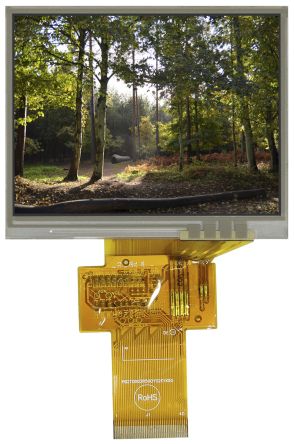
OLED displays are electronic visual panels that harness organic light-emitting diodes (which, of course, is what the acronym OLED stands for) for their core illumination power. OLED is a type of electroluminescent display technology, in which an organic material layer generates light when molecules in the diode are agitated by an electric current.
As with many other display types, an OLED array can be used to present images, text, video and more on a screen or panel of almost any size, and the technology has been especially prevalent on the high-end home entertainment market over the past few years. Thanks to the unique strengths they deliver in terms of power and performance, OLED screens are also in increasingly widespread use as performance display tools across all industries and sectors today.
What is OLED technology?
Most of us are already familiar with standard LEDs, or light-emitting diodes - the small lights you often find included as components on printed circuit boards (PCBs) and electronic instrument panels. They’re also very widely used today in countless forms of modern household illumination, high-end screen technologies, and much more besides.
OLEDs are mechanically comparable to any other standard LED, insofar as:
-
-
- A diode is set up to emit light by being sandwiched between two electrodes with a voltage attached.
- When power is sent through this component in the form of electricity, it illuminates with a bright, clear light that doesn’t generate any significant heat (or guzzle anything like the power that traditional incandescent lamps do).
- The key difference with an OLED specifically is that the light it gives off is created through the interaction of organic molecules undercurrent.
- 'Organic’ in this context means carbon-based molecules, which are deposited across a thin film to which the requisite anode and cathode are connected.

-
Aside from the precise nature of the compounds involved, then, the core principle behind how LEDs/OLEDs themselves work is broadly similar. However, when talking about panel technology, OLED screens differ from standard LED displays in a much more fundamental way:
-
-
- LED screens are a form of LCD, or liquid crystal display. (There’s often major confusion between these two terms, thanks largely to the vagaries of TV brand marketing.)
- To clarify, LED is really just a subtype of LCD, and an incredibly common one at that. In fact, most modern LCD displays will be LED versions, to the extent that you can almost use the terms interchangeably nowadays - hence the confusion!
- In a typical LED/LCD display, the LEDs are what provide the backlighting that illuminates pixels beneath the LCD layer of the setup.
- OLED panels, however, are quite different. When used in a display, OLEDs emit their own light directly to screen from immediately beneath it - to all intents and purposes, they are the pixels being lit up, rather than OLEDs doing the heavy lifting in the background as standard LEDs do.
- This important distinction enables OLED displays to offer various significant advantages over standard LED technologies, many of which make them far stronger performers across a number of specific criteria and applications.
- LED screens are a form of LCD, or liquid crystal display. (There’s often major confusion between these two terms, thanks largely to the vagaries of TV brand marketing.)
-
OLED vs LED - Advantages and Disadvantages
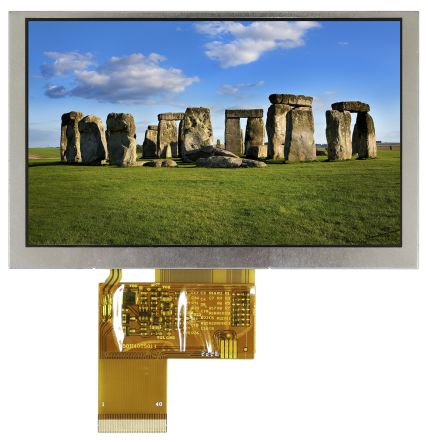
Due to the fundamental difference in how OLED technology works, it offers some striking and unique characteristics when compared to the standard LED displays we’ve seen in previous years. In this section, we’ll outline a few of the headline strengths and weaknesses of OLED displays as a newer, more cutting-edge update to the older (though still high-performing and very popular) LED standard.
-
-
Higher contrast ratio. Because OLEDs emit their light directly to screen, a given grouping of pixels can effectively be completely shut off when instructed to display dark areas. In this state they emit no light at all, resulting in a clear and obvious perception of very deep, rich blacks and tonal shades.
-
Most LCD types - including standard LED panels - can’t manage such impressive contrast ratios, as their version of ‘black’ has to be achieved by simply masking the LED display backlighting to whatever extent is possible.
-
Under these conditions, there’s almost always some degree of backlight bleed from LED displays, and as a result, their blacks are far less deep and crisp.
-
-
Wider viewing angles. Again, this is because OLEDs are located much closer to the surface and emit their light directly to the screen, without having to pass through a liquid crystal layer as you’d find on standard LED displays.
-
The LCD layer causes a degree of refraction that can have odd effects when viewing a standard LED panel from more acute angles.
-
Higher quality LED panels, such as those that use In-Plane Switching (IPS) technology, can mitigate this to an extent - but cheaper versions such as Twisted Nematic (TN) screens are still common, and do suffer greatly in this area.
-
-
Quicker response times. Display ‘response times’ refer to the length of time it takes a given pixel to switch between on and off states in response to an input signal.
-
As outlined above, current OLED displays are able to do this in a blink, and can, therefore, boast far better response times than LED/LCD panels - as low as 1 millisecond, in fact.
-
This makes OLEDs the clear winners when it comes to displaying images in rapid motion, with much less noticeable artifacting. LEDs struggle in this regard, due in part to every single diode having to illuminate multiple pixels behind an LCD layer
-
-
Potential disadvantages of OLED displays when placed up against LED/LCD versions, however, are as follows:
-
-
Shorter lifespan. The organic materials used in the OLEDs have a limited lifespan compared to LCD displays
-
Lower brightness. While the contrast ratio is far superior on a typical OLED display, its overall luminosity level - generally measured in ‘nits’, which roughly equates to candles per square metre - is considerably lower due to the organic nature of the molecules at its core.
-
This isn’t a huge disadvantage in some scenarios, especially as both display types can get plenty bright enough for standard indoor viewing, but it’s a potential problem when it comes to comparative outdoor performance (such as is often required in phones and other handheld devices).
-
In high-exposure conditions, OLEDs can appear washed out and difficult to read, or struggle to achieve sufficiently accurate, rich colour reproduction. Increasing overall screen brightness to combat these issues can be effective, but can also further reduce the lifespan of OLED displays.
-
-
Higher power consumption. One of the real advantages of LED technology is the very low power draw it requires to run bright, crisp illumination for extended periods.
-
An OLED display can also achieve this to an extent, but in so doing it will generally consume significantly more power than an equivalent LCD display (unless the image is primarily black, for reasons outlined above).
-
-
Possibility of burn-in over time. Although on paper it should be difficult to achieve given the (still relatively low) power consumption of OLED displays, some early adopters of the technology have reported issues with overuse of specific pixels leading to prematurely faded areas on the screen.
-
In extreme cases, this can lead to a ‘ghost’ image being permanently and indelibly overlaid on top of whatever else the screen is trying to display, as the pixels in that area have degraded.
-
-
Types of OLED
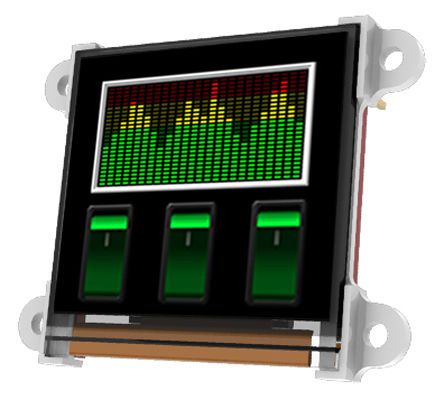
Numerous types of OLED displays are available to buy from manufacturers and suppliers in the UK and worldwide, and many OLED panel products can readily be fitted with a range of accessories such as touch screen sensors and display bezels, or adapted for use in specific roles and positions via various display interface kits.
As we’ve already outlined in the paragraphs above, an OLED screen is made up of an array of individual OLEDs that can be individually turned on and off in a fast, highly coordinated way to present an image. This is known as ‘driving’ the image, and there are various methods of driving an OLED display, all of which represent slight tweaks and amendments to the basic OLED technology.
AMOLED displays
 If you’ve heard of any of the ‘subtypes’ of OLED display, the chances are AMOLED will be the most immediately recognisable one. (Nearly all OLED screens today, particularly on smartphones and other high-end handheld devices, will, in fact, be AMOLED versions, as the slightly more advanced driver technology has somewhat taken over in this sector.)
If you’ve heard of any of the ‘subtypes’ of OLED display, the chances are AMOLED will be the most immediately recognisable one. (Nearly all OLED screens today, particularly on smartphones and other high-end handheld devices, will, in fact, be AMOLED versions, as the slightly more advanced driver technology has somewhat taken over in this sector.)
This acronym stands for Active-Matrix OLED (as opposed to the cheaper, more basic and lower resolution Passive-Matrix, or PMOLED, versions). In short, AMOLED displays refer to an OLED screen that uses a microscopically thin film transistor backplane to switch each pixel between on and off states.
You could go into considerable depth explaining precisely what the technical definition of AMOLED actually involves on a complex chemical and physical level - but that’s probably best saved for another guide! Suffice to say here that OLED screens, in general, rely on the simultaneous switching of individual organic compounds in the diodes to create near-instant shifts across different elements of the displayed image.
In an AMOLED panel, this challenge is handled by a transistor and a storage capacitor contained in each individual pixel of the display. The bottom line in terms of overall performance? You can typically expect better energy efficiency from a thinner, lighter and more flexible panel while maintaining an exceptionally high image quality when correctly calibrated.
Downsides of AMOLED include shortened lifespan (particularly for certain colour-specific molecules - blue elements are a particular issue), more noticeable difficulty generating a clear image under direct light, and increased vulnerability to moisture ingress and humidity.
POLED displays
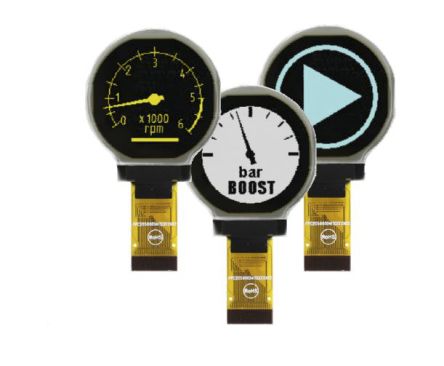 Short for polymer or polymeric OLED, POLED (sometimes written as PLED) panels are OLED screens that feature a plastic substrate as one of the layers. This is a newer development over the more traditional glass substrate versions that most earlier OLED panels were manufactured with - but, other than this literal material difference, they’re essentially another version of AMOLED, and deliver many of the same pros and cons.
Short for polymer or polymeric OLED, POLED (sometimes written as PLED) panels are OLED screens that feature a plastic substrate as one of the layers. This is a newer development over the more traditional glass substrate versions that most earlier OLED panels were manufactured with - but, other than this literal material difference, they’re essentially another version of AMOLED, and deliver many of the same pros and cons.
PLED displays today cater to a growing market sector demanding startling reworkings or traditional form factors, especially those focused around increasingly flexible screens. These are used both for commercial showpiece applications, such as highly curved displays on a very large scale and also for pushing cutting-edge prototypes such as foldable tablets and roll-up high definition displays.
OLED display manufacturers
There are almost as many different OLED panel manufacturers on today’s market as there are potential uses for the technology. Below are a few of our most popular brands for OLED displays
